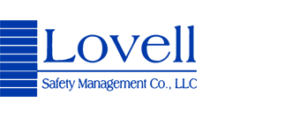The COVID-19 pandemic has forced many of us to work from home and it appears that working from home will continue for many organizations even post-pandemic. Whether your employees are new to the work-from-home lifestyle, or have been doing it for years, here are some tips to keep them safe and healthy and help avoid unnecessary workers’ compensation claims.
With the exception of patient handling in healthcare, only California has a regulation that addresses ergonomics. It is OSHA’s policy not to inspect home offices, and it does not expect employers to do so, nor will it hold the employer liable for home office conditions. However, the General Duty Clause of the Occupational Safety and Health Act still applies, and employers must provide a place of employment free of recognized hazards that are likely to cause death or serious harm. Although the employer does not control the work environment for home-based employees, employers may be responsible for hazards caused by materials, equipment, or work processes which the employer provides or requires to be used in an employee’s home. Therefore, employers should ensure that any materials or equipment they provide to home-based employees is in safe working condition and that employees are instructed in its safe installation and use.
With regards to workers’ compensation, injuries sustained in accidents outside the workplace are generally not compensable, at-home work however may qualify when it is “either a specific work assignment for the employer’s benefit … or so regular a pattern of work at home that the home achieves the status of a place of employment.”
As companies continue to navigate and overcome their own individual obstacles, it is important that safety is not brushed aside. Although staff may no longer make the commute into the office, safety hazards can and do still exist in the home. OSHA has excellent information on how to set up a workstation. It can be found at https://www.osha.gov/etools/computer-workstations.
Some basic steps that should be taken to keep a home office safe include:
Housekeeping:
Keep your workplace tidy and clear of hazards. Be sure to clean up daily just as you would at the office. Tie up or secure cords to avoid tripping hazards. Electrical hazards can result from broken or frayed cords or overloaded circuits. Be mindful of the condition of your cords, as well as the number of cords plugged into an outlet to avoid circuit overload.
Lighting:
Bright lights shining on the display screen “wash out” images and can create contrast issues, making it difficult to clearly see your work. Straining to view objects on the screen can lead to eye fatigue. Indirect or diffused lighting is best.
Workstation Set Up:
Basic ergonomic principles can help create a safe and comfortable computer workstation. There is no single “correct” posture or arrangement of components that will fit everyone. Adjustability is really the key. However, there are basic design goals to consider when setting up a computer workstation or performing computer-related tasks.
- The top of the monitor should be at or just below eye level.
- Head and neck should be straight, balanced and in-line with torso.
- Shoulders down and relaxed.
- Elbows close to the body and supported.
- Lower back supported.
- Wrists and hands in-line with forearms.
- Feet flat on the floor or use a foot stool to ensure that hips and knees are aligned.
- Ensure adequate room for keyboard and mouse.
- The keyboard platform must be able to be adjusted so that hands can be positioned over the keyboard while shoulders remain relaxed. Elbows should be near the torso at an angle of 90 to 100 degrees to the body.
- If laptops are used as a primary computer, they must be set up using the same ergonomic principles as desktop computers. A separate keyboard and input device are recommended.
Prolonged periods of inactivity:
Sitting all day puts home office workers at risk for numerous health problems. Taking regular breaks is essential. Ensure that there is time during the day to stand, stretch, and move around. This provides rest and allows the muscles enough time to recover. Alternate tasks whenever possible, mixing non-computer-related tasks into the workday. This encourages body movement and the use of different muscle groups.
Implement a Check-In Procedure
Even though your employees may not be working in a physical office, maintaining contact with your staff is still extremely important. Open lines of communication are an effective way of ensuring the safety and wellness of your staff. By implementing a worker check-in procedure, you can automatically confirm the safety of your team periodically throughout the day. Remote staff members can check in at predetermined time intervals throughout their shift and you will know that something is wrong if a check-in is missed.
Stay in touch. Utilize web conferences, social media, phones, etc. to stay in touch with co-workers, as well as family. This helps get work done more efficiently as well as allowing socialization and reduces the feeling of being isolated. All employees need to maintain the sense that they still have co-workers, managers, and a sense of workplace community.
















